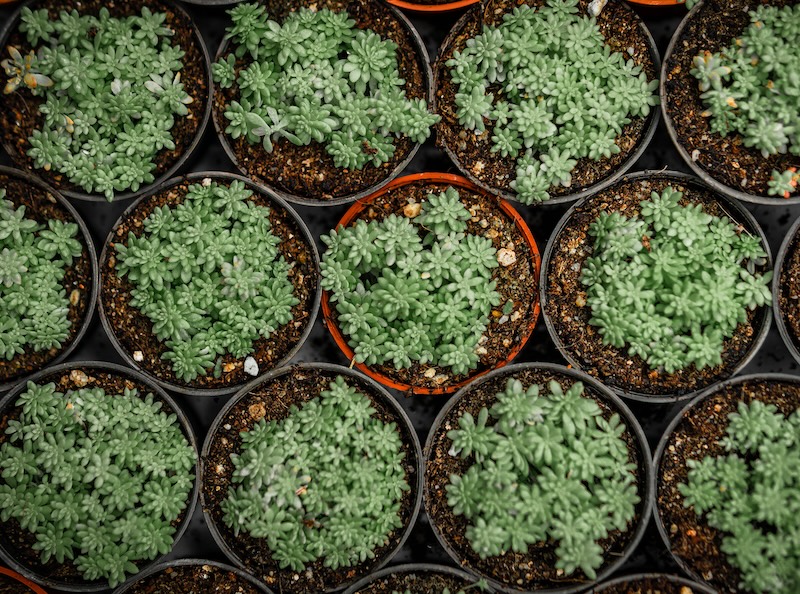In the garden, two types of sedum are commonly found: prostrate and clumping. Prostrate types have smaller leaves and make wonderful ground cover plants, rarely growing taller than 12 inches. Clumping types of sedum grow much taller, 2-3 feet generally, and spread in a slow, but steady manner. Each type can be easily propagated by layering the stems, taking cuttings, or dividing mature plants.

Methods To Propagate Sedum
Cuttings, air layering, and division are all easy to do with sedums. Although some plants are notoriously difficult to start or take a long time to establish, sedums are one of the easiest plants to propagate. Sedums often have adventitious roots growing along the stem that are ready to take hold in soil or other media. That is why sedum ground covers readily root and spread from stems placed directly on the soil. Clumping types have shallow fibrous roots and are easy to divide or propagate from cuttings.
What You Need To Propagate Sedum
Air layering of creeping sedums can be as easy as placing a rock over a stem so that it grows roots as it makes contact with the soil. You can also use sod pins or bent pieces of lightweight gauge metal (paperclips, clothes hangers, etc) to hold the stems down more firmly with less risk of wildlife disrupting the layering process.
Take cuttings of sedum in early summer before the flower buds begin to form. Use a sharp pocket knife or hand pruners to cut off stems. The stems can be placed in either a glass of water on a sunny windowsill or in a small pot of potting soil mixed with perlite.
Dividing sedum is the quickest way to propagate new plants. You can use a long-handled transplanting spade, garden fork, and possibly a serrated garden knife. If you do not have a spot for the new plants, you can plant them into well-draining containers for a year or two.
Best Time To Propagate Sedum
Sedums can be air layered anytime during periods of active growth. Cuttings are best taken during the early summer as new stems are growing, although any stems that break off during the summer can be used as softwood cuttings. Dividing plants is most successful early in the spring when new growth is emerging. It is very easy to see the natural divisions in the root system, and there is no extra top growth for the plant to support at this time. Most clump-forming sedums bloom late in the summer and fall making them less likely to establish well at that time of the year.
Steps To Propagate Sedum
Division is a great way to propagate sedum and can be accomplished by amateur and experienced gardeners alike. Both clump-forming and prostate sedums can be divided by following the steps below.
Step 1 - Dig up the entire plant or cut through a section you’d like to transplant. Watering the plant well the day before will help to loosen any dry compacted soil around the plant. Make sure to extract as much of the root ball as possible. A better developed root system will help the new plants quickly establish when transplanted.
Step 2 - Use a garden knife or sharp spade to cut through the crown to make divisions that each have stem nodes and plenty of roots.
Step 3 - Replant each division in a hole that is the same size as the rootball. The roots of prostrate sedum are shallow and will grow with only an inch of soil cover. Firm the soil around the plant gently, as any new shoots and stems are very brittle.
Step 4 - Water the plants in well, allowing the water to drain before mulching around the base.

Caring For Young Sedum
Divided sedums will need supplemental watering to aid in their establishment. Provide about an inch of water a week in the absence of rain. Place potted sedums in a semi-shaded location out of the direct path of storms or heavy winds. Keep the pots watered consistently during the summer months. Fertilize the plants with a dilute liquid seaweed or fish emulsion product once every other month if they will be grown for more than one season in a pot.
 |
Author Robbin Small - Published 12-14-2023 |
